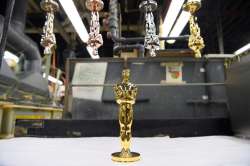What makes the Oscar trophies never lose shine? NASA is here to tell
Ever wondered how the Oscars’ golden statuette maintains its shine?

Ever wondered how the Oscars’ golden statuette maintains its shine? Well, the coveted Oscar trophy is coated in the same gold that helps telescopes glimpse distant galaxies, ensuring that the hard-earned prize never loses its shine, according to NASA.
US-based Epner Technology, which has been working with NASA since the 1970s and improved its electroplating technique doing aerospace work in the 1990s, claims that its gold would never flake off.
In 2016, Epner’s reputation for durable and brilliant gold coatings, earned it a new client – the Academy of Motion Picture Arts and Sciences. For more than three decades, a trophy manufacturer had been casting the Oscars in a tin alloy and then plated them with gold. They shone, but the coating eventually wore off. Epner uses an electroplating process it calls LaserGold. The resulting coating was already harder and more reflective than vapour-deposited gold, but both attributes have been further improved through the company’s collaboration with NASA.
“We guaranteed that our gold coating will never come off,” company president David Epner said. Epner has offered a lifetime guarantee to replate, for free, any Oscar that starts to show wear. Gold is useful in space, because it is good at reflecting infrared wavelengths of light, which help to detect celestial objects from very far away. It is also inert and does not tarnish. The most common method for gold coating is by vapour deposit. The metal is heated in a vacuum until it becomes a gas, which then condenses in a thin layer across a surface.
The process is effective but has drawbacks. For one, the gold loses some of its reflectivity. It also becomes extremely delicate. The telescope’s designers wanted a gold-plating method that would maintain the high reflectivity of solid gold and be extremely durable. Epner Technology claimed its gold would never flake off and that their gold plating was significantly more reflective than vapour-deposited gold.
It has been using the improved technique for its varied commercial clients, from thermometers to infrared carbon dioxide detectors to jewellery from gold-plated lace.
(with PTI inputs)